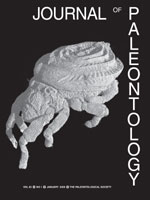The genus Prolagus is very common in the Neogene and Quaternary of Europe, western Asia and northern Africa. However, the complexity of its systematics, mainly based on p3 characters that show great inter- and intraspecific variability, led to an under-utilization of Prolagus in biochronology and palaeogeography studies. A re-analysis of the species of Prolagus recorded in the Escobosa de Calatañazor karst fissure fillings (Duero Basin, northern Spain, MN7/8, late Middle Miocene) includes the introduction of new maxillary and mandibular morphological characters (position, shape and size of premolar and mandibular foramina) and new dental measurements (hypoflexus depth, distal hypercone length, and partial width of upper premolars; relative length of trigonid of lower molariform teeth) to be used for species discrimination within the genus Prolagus. The new morphological characters and measurements introduced in this paper allow for a more accurate taxonomic assignment of Prolagus species, thus improving the estimation of faunal palaeodiversity, detection of sympatric species and taphonomic mixing, and contributing to more reliable biochronological, palaeogeographical, and phylogenetic inferences based on Prolagus.
How to translate text using browser tools
1 January 2009
New Characters for Species Discrimination within the Genus Prolagus (Ochotonidae, Lagomorpha, Mammalia)
Chiara Angelone,
Carmen Sesé
ACCESS THE FULL ARTICLE

Journal of Paleontology
Vol. 83 • No. 1
January 2009
Vol. 83 • No. 1
January 2009




